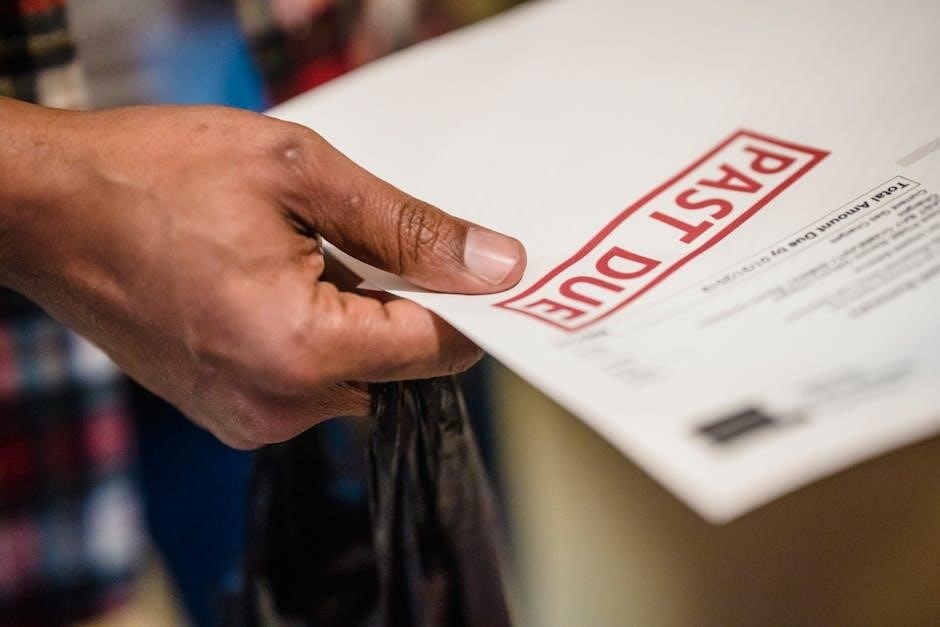Proper post-operative care after tooth extraction is crucial for promoting healing, reducing discomfort, and preventing complications. Follow these guidelines to ensure a smooth recovery, including rest, diet, and avoiding harmful activities.

Immediate Care After Tooth Extraction
Bite on gauze for 30-60 minutes to control bleeding. Avoid spitting, rinsing forcefully, or using a straw for 24 hours to protect the extraction site.
First 24 Hours Post-Extraction
Bite on the provided gauze for 30-60 minutes to control bleeding. Avoid spitting, rinsing forcefully, or using a straw to protect the extraction site. Rest and avoid strenuous activities.
Stick to a soft-food diet and avoid hot or sharp foods. Do not smoke, drink carbonated beverages, or consume alcohol. Manage pain with prescribed medication and stay hydrated.
Bleeding Management
Bleeding is normal after a tooth extraction. Bite firmly on the gauze provided for 30-60 minutes to help stop the bleeding. If bleeding continues, replace the gauze with a clean one and apply pressure. Avoid spitting, rinsing forcefully, or using a straw, as this can dislodge the blood clot and worsen bleeding.
If light bleeding persists, you can bite on a dampened tea bag for 30 minutes. Remain calm, keep your head elevated, and avoid strenuous activities. If heavy bleeding doesn’t stop, contact your dentist immediately for further guidance.
Pain Control and Medication
Managing pain after tooth extraction is essential for a comfortable recovery. Take prescribed pain medication as directed by your dentist, starting with the first dose before the anesthesia wears off. Over-the-counter options like ibuprofen or acetaminophen can also be effective. Always follow the recommended dosage and instructions. Avoid alcohol while taking pain medication, as it can interfere with healing and increase bleeding risk. If pain persists or worsens despite medication, contact your dentist for further evaluation. Proper pain management helps ensure a smooth and stress-free recovery process.
Swelling Reduction
Swelling after tooth extraction is normal and typically occurs within the first 24-48 hours. To minimize swelling, apply an ice pack to the cheek near the extraction site for 15-20 minutes at a time, with breaks in between. Repeat this process for the first 24 hours. Keep your head elevated, especially while sleeping, by propping up your head with extra pillows. This helps reduce blood flow to the area and alleviates swelling. Avoid strenuous activities that may increase blood pressure. If swelling persists or worsens, contact your dentist, as it could indicate complications. Proper swelling management ensures a more comfortable recovery and supports the healing process.

What to Avoid After Tooth Extraction
Avoid smoking, spitting, using a straw, strenuous activities, and consuming alcohol or carbonated beverages for 48 hours post-extraction to promote healing and prevent complications.
Smoking and Tobacco Use
Smoking and tobacco use should be avoided for at least 48 hours after tooth extraction. Smoking can dislodge the blood clot, leading to dry socket and delayed healing. Tobacco products irritate the extraction site, increasing the risk of infection and prolonging recovery. Nicotine restricts blood flow, which is essential for proper healing. Avoiding tobacco products ensures the best outcomes and minimizes complications. If you cannot quit, consult your dentist or a specialist for guidance on managing withdrawal symptoms during recovery.
Spitting or Rinsing Forcefully
Avoid spitting or rinsing forcefully for at least 48 hours after tooth extraction. This can dislodge the blood clot, leading to dry socket or delayed healing. Gentle rinsing with salt water may be recommended after the first day, but avoid vigorous movements. Forceful spitting can create suction in the mouth, interfering with the healing process. Instead, let saliva drip naturally or wipe your mouth with a clean cloth; If you must rinse, use a soft, gentle motion to avoid disturbing the extraction site. Your dentist may provide a syringe for gentle irrigation starting around day 5 to remove debris without causing harm.
Using a Straw
Avoid using a straw for drinking for at least 48 hours after tooth extraction. The suction created by using a straw can dislodge the blood clot from the extraction site, leading to complications such as dry socket. Instead, drink directly from a glass to minimize suction and protect the healing area. If you must use a straw after a few days, do so gently and only for essential beverages. However, it’s best to avoid straws entirely during the initial recovery period to ensure proper healing and prevent unnecessary discomfort or complications.
Strenuous Activities
Avoid engaging in strenuous activities, such as heavy lifting, running, or intense exercise, for the first 24 to 48 hours after tooth extraction. These activities can increase blood pressure and dislodge the blood clot, potentially leading to complications like dry socket. Gentle movements, such as walking, are usually acceptable, but avoid any activity that causes discomfort or strain. Rest is essential to promote healing and minimize the risk of complications. By limiting physical exertion, you allow your body to focus on recovering efficiently, ensuring a smoother and faster return to normal activities.
Alcohol and Carbonated Beverages
Avoid consuming alcohol and carbonated beverages for at least 48 hours after tooth extraction. These drinks can irritate the extraction site, delay healing, and dislodge the protective blood clot, increasing the risk of complications like dry socket. Additionally, alcohol can interfere with pain medications and prolong recovery. Carbonated beverages can cause discomfort and disrupt the healing process. Stick to soft, non-carbonated drinks, such as water or herbal teas, to stay hydrated without risking your recovery. Wait until your dentist confirms the site is healing properly before resuming alcohol or carbonated beverages.

Dietary Recommendations
Stick to soft, non-irritating foods like yogurt, mashed potatoes, and smoothies. Avoid hard, crunchy, or spicy foods that could disrupt the extraction site or delay healing.
Soft Foods to Eat
Opt for soft, non-irritating foods such as yogurt, scrambled eggs, mashed potatoes, and applesauce. These foods are gentle on the extraction site and promote healing. Avoid chewing directly over the wound to prevent dislodging the blood clot, which is essential for proper recovery. Soups, smoothies, and pureed vegetables are also excellent choices, as they require minimal chewing and are easy to swallow. Hydration is key, so consider sipping warm broth or water to stay nourished without irritating the area. Soft, ripe fruits like bananas or avocados can be included once you feel comfortable eating solids again. Always prioritize foods that are easy to eat and minimize discomfort during the healing process.
Foods to Avoid
Avoid hard, crunchy, or sharp foods like nuts, chips, and popcorn, as they can irritate the extraction site. Spicy, hot, or acidic foods should also be avoided to prevent discomfort. Do not consume sticky foods like caramel or toffee, as they may dislodge the blood clot. Avoid alcohol and carbonated beverages, as they can interfere with healing and cause irritation; Refrain from drinking through a straw, as the suction can dislodge the clot. Hard fruits and vegetables, such as apples or carrots, should be avoided until healing progresses. Opt for soft, bland foods to minimize discomfort and promote recovery. Stick to a gentle diet to support your healing process.
Hydration Tips
Staying hydrated is essential for recovery, but be mindful of how you drink. Avoid using straws, as the suction can dislodge the blood clot. Drink plenty of water, clear broths, or electrolyte-rich beverages to prevent dehydration. Avoid hot liquids for the first 24 hours, as they can cause discomfort. Sip gently and choose room-temperature or cool drinks. Carbonated beverages should be avoided for at least 48 hours. Keep your head slightly elevated while drinking to reduce swelling. Proper hydration helps maintain blood flow and supports the healing process. Opt for soft, non-irritating fluids to ensure comfort and promote recovery. Avoid alcohol and caffeine, as they can interfere with healing and pain management.

Oral Hygiene Practices
Gentle oral care is key after extraction. Avoid disturbing the extraction site, but rinse softly with saline solution. Resume normal brushing carefully, keeping the toothbrush away from the surgical area to prevent irritation and promote healing.
Gentle Rinsing Techniques
Start rinsing gently with warm salt water 24 hours after extraction. Mix 1 teaspoon of salt in 8 ounces of warm water. Tilt your head to let the solution flow over the extraction site without force. Avoid vigorous swishing or spitting, as this can dislodge the clot. Use a cup to rinse, rather than spraying water directly from the faucet. Continue this 2-3 times daily for the first week. Gentle rinsing helps remove bacteria and debris, promoting a clean environment for healing. Ensure the water is not too hot or cold to avoid discomfort. This practice supports the healing process effectively.
Brushing Around the Extraction Site
Begin brushing gently with a soft-bristle toothbrush 24-48 hours after extraction. Avoid directly brushing the extraction site, but clean surrounding teeth normally. Be cautious not to dislodge the blood clot, as this can delay healing. Use mild toothpaste and light strokes to maintain oral hygiene without irritating the area. Resume normal brushing gradually, ensuring the extraction site heals properly. Monitor the site for signs of healing, such as reduced swelling and tissue repair. By following these steps, you can maintain cleanliness while protecting the extraction area during recovery.
When to Resume Normal Hygiene
Resume normal oral hygiene practices 24-48 hours after extraction, but with caution. Gently brush and floss teeth, avoiding the extraction site. Wait until swelling subsides and the site appears to heal before resuming full hygiene routines. Avoid vigorous brushing near the extraction area to prevent dislodging the blood clot. If discomfort or bleeding persists, consult your dentist for guidance. Proper timing ensures the extraction site heals without complications, allowing you to return to your regular hygiene routine safely.

Follow-Up Care
Monitor healing progress and attend follow-up appointments as scheduled. Contact your dentist if healing is delayed or unusual symptoms arise, such as increased pain or swelling.
When to See Your Dentist
It is essential to schedule follow-up appointments as directed by your dentist to monitor the healing process. Attend these check-ups to ensure the extraction site is healing properly. If you experience unusual symptoms, such as severe pain, swelling, or bleeding that persists beyond a few days, contact your dentist immediately. Additionally, if you notice signs of infection, such as redness, pus, or a bad taste in your mouth, seek professional advice promptly. Timely dental care can prevent complications and ensure a smooth recovery. Regular monitoring also helps address any concerns early, minimizing the risk of further issues. Proper follow-up care is vital for optimal healing and oral health.
Checking Healing Progress
Monitoring the healing progress after a tooth extraction is crucial to ensure proper recovery. Typically, healing begins within the first few days, with noticeable improvements each week. You should observe a reduction in swelling, bleeding, and pain over time. Keep an eye on the extraction site for signs of infection, such as increased redness, pus, or a foul odor. If healing seems slow or irregular, contact your dentist for an evaluation. Most extraction sites fully heal within 7-14 days, but this may vary depending on the complexity of the procedure. Regular check-ups with your dentist will help confirm that the healing process is on track and address any concerns promptly.

Activity Restrictions
Avoid strenuous activities, heavy lifting, bending, or exercise for 48 hours post-extraction. Rest is crucial to promote healing and prevent dislodging the blood clot. Refrain from smoking or using a straw, as suction can disrupt the healing site. Limit physical exertion to minimize swelling and ensure proper recovery.
Avoiding Strenuous Exercise
Strenuous exercise should be avoided for at least 48 hours after tooth extraction to prevent dislodging the blood clot. Activities like running, heavy lifting, or bending can interfere with healing. Gentle movements, such as walking, are acceptable if they don’t cause discomfort. Overexertion can lead to prolonged recovery or complications. Resting allows your body to focus on healing the extraction site effectively. Avoid sports or any activity that could accidentally disrupt the wound. By limiting physical strain, you help ensure a smooth and uneventful recovery process. Always prioritize rest and follow your dentist’s specific recommendations for activity levels during the healing period.
Rest and Relaxation
Rest is essential after tooth extraction to promote healing and reduce the risk of complications. Avoid lying flat; instead, elevate your head slightly using pillows to minimize swelling. Engage in calm activities like reading or watching TV to keep your mind occupied without exerting yourself. Avoid strenuous tasks or bending, as this can dislodge the blood clot. If possible, take a day off work or school to focus solely on recovery. Limit physical activity to short, gentle walks if needed. Overexertion can prolong healing, so prioritize relaxation. Apply an ice pack to the affected area if swelling occurs, but only for 15-20 minutes at a time. Resting adequately ensures your body can heal efficiently and effectively.

Managing Complications
Monitor for signs of infection, such as increased pain, swelling, or fever. Contact your dentist immediately if you experience these symptoms. Dry socket prevention is crucial, as it can delay healing. Avoid smoking, spitting, or using a straw, as these actions can dislodge the blood clot. If complications arise, seek professional advice promptly to ensure proper treatment and prevent further issues.
Signs of Infection
Be vigilant for signs of infection, such as increased pain, swelling, or redness around the extraction site. Pus or discharge may indicate an infection. A persistent bad taste or odor, fever, or chills are also concerning symptoms. If you experience these, contact your dentist immediately. Delayed healing or persistent bleeding beyond the expected timeframe can also signal complications. Monitor your temperature and overall well-being, as any significant changes may warrant medical attention. Early intervention is key to resolving infections and ensuring proper healing. If symptoms persist or worsen, seek professional care without delay.
Dry Socket Prevention
To prevent dry socket, avoid dislodging the blood clot by refraining from smoking, spitting, or using a straw. Gently rinse with saltwater as directed. Avoid strenuous activities for 48 hours and stick to a soft-food diet. Do not drink carbonated or alcoholic beverages, as they can irritate the site. Maintain good oral hygiene by brushing gently around the area but avoiding direct contact with the extraction site. If prescribed, use medicated dressings or mouthwashes to promote healing. Attend follow-up appointments to monitor progress. Early signs of dry socket, such as sharp pain or exposed bone, should be reported to your dentist promptly. Proper care can significantly reduce the risk of this complication.

General Recovery Tips
Rest, hydration, and gentle mouth care are essential. Monitor for complications and follow your dentist’s advice to ensure proper healing and avoid recovery setbacks.
Importance of Rest

Rest is crucial for healing after tooth extraction. Avoiding strenuous activities helps prevent dislodging the blood clot, reducing the risk of complications such as dry socket. Lying down or propping your head slightly can minimize bleeding and discomfort. Overexertion may delay recovery, so prioritize relaxation. Gentle movements and avoiding heavy lifting are recommended; Ensure adequate sleep to support your body’s healing process. By resting, you promote faster recovery and reduce the chance of post-operative issues. Returning to normal activities should be gradual and guided by your dentist’s advice.
Monitoring for Complications
Monitoring for complications after tooth extraction is essential to ensure a smooth recovery. Watch for signs of infection, such as increased pain, swelling, or redness. Excessive bleeding or discharge may indicate improper clotting. A bad taste or fever could signal infection. Dry socket, a common complication, occurs when the blood clot dislodges, exposing the bone. If you experience severe symptoms or unusual side effects, contact your dentist promptly. Early detection of issues can prevent further problems and ensure proper healing. Stay vigilant and report any concerns to avoid delays in treatment.
Proper post-operative care is key to a smooth and uneventful recovery after tooth extraction. By following the guidelines outlined, you can minimize discomfort, reduce the risk of complications, and promote healing. Remember to monitor your progress, avoid harmful activities, and maintain good oral hygiene. If you notice any unusual symptoms or concerns, contact your dentist promptly. With careful attention and patience, you can ensure a successful recovery and return to normal activities. Always prioritize your health and seek professional advice if needed.
